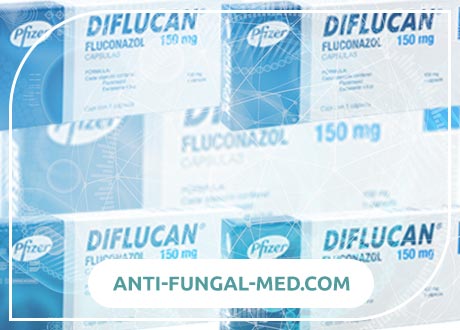
Introduction
Athlete's foot - called tinea pedis - is a fungal disease that ordinarily starts between the toes. It usually happens in individuals whose feet have turned out to be extremely damp with sweat while restricted to tightfitting shoes. Signs and symptoms of athlete’s foot fuse a layered rash that usually causes shivering, stinging and devouring. Athlete’s foot is infectious and can be spread by means of sullied floors, towels or apparel. Athlete's foot is firmly identified with other parasitic diseases, for example, ringworm. It can be treated with over-the-counter antifungal pharmaceuticals; however, the infection frequently repeats. Professionally prescribed medication is also accessible for treatment. In this article, we will look at athlete’s foot in detail, look at its causes, symptoms and treatments as well as prevention tips.
What is it?
Athlete's foot is a term given to any provocative skin infection that influences the underside of the foot and the skin between the toes. It is typically a textured, red, crude showing up ejection and once in a while might be blubbering and overflowing with little rankles. It impacts the feet of competitor and non-competitors alike. Despite the fact that it is every now and again caused by a parasitic disease, different causes might be indistinct without legitimate testing.

There is an assortment of growths that reason athlete’s foot, and these can be contracted in numerous areas, including exercise centers, locker rooms, swimming pools, common showers, nail salons, and from defiled socks and apparel. The organisms can likewise be spread straightforwardly from individual to individual by contact. The vast majority procure parasite on the feet from strolling shoeless in territories where another person with athlete’s foot has as of late strolled. A few people are just more inclined to this condition while others appear to be moderately impervious to it.
The fungal infections are further encouraged by warmth and moisture. There is some hypothesis that before closed shoes wound up becoming normal among us, tinea pedis was less pervasive. Up to 70% of the populace may build up athlete’s foot sooner or later. A contamination by athlete’s foot parasites does not give any protection from consequent diseases.
Causes
The dominant part of athlete’s foot cases is caused by an assortment of parasites all having a place with a gathering called dermatophytes, which additionally causes muscle head tingle and ringworm. The growths flourish in shut, warm, soggy conditions and feast upon keratin, a protein found in hair, nails, and skin. Infrequently, athlete’s foot can be caused by non-dermatophytes, similar to yeast (candida).
Athlete’s foot is somewhat infectious. It can be spread through direct contact and by skin particles left on towels, shoes, or floors.
Strolling shoeless may build your shot of getting athlete’s foot. The danger of building up athlete’s foot can likewise rely upon your weakness. For example, people who have weak immune systems or diabetes are at more serious danger of contamination in the event that they have an open cut or sore on their feet.
Risk Factors
You are more likely to contract athlete’s foot on the off chance that you:
- Are a man
- Every now and again wear moist socks or tightfitting shoes
- share mats, mats, bed materials, garments or shoes with somebody who has this contagious infection
- Walk shoeless in broad daylight in regions where the disease can spread, for example, locker rooms, saunas, swimming pools, mutual showers and showers
Is it contagious?
If caused by a fungus, then athlete’s foot is possibly infectious. A few people don't develop this fungal contamination even after introduction to the growth. The reason behind this is unknown.
Symptoms
Athlete’s foot can occur on one or the two feet, and there are distinctive composes. However, with any sort you have, you'll most likely observe:
- tingling, stinging, and burning sensation between the toes
- tingling, stinging, and burning sensation on the bottoms of the feet
- blisters on the feet that burn
- splitting and peeling skin on the feet, most regularly between the toes and on the bottoms
- dry skin on the bottoms or sides of the feet
- crude skin on the feet
- stained, thick, and brittle toenails
- toenails that draw far from the nail bed
Complications
If not treated properly, athlete’s foot can spread to different parts of your body, including:
The hand
Individuals who scratch or pick at the contaminated parts of their feet may build up a comparative disease in one of their hands.
The nails
The parasites related with athlete’s foot can likewise contaminate your toenails, an area that has a tendency to be more impervious to treatment.
The crotch
Jock itch is regularly caused by a similar parasite that outcomes in athlete’s foot. It's regular for the disease to spread from the feet to the crotch as the organism can go staring you in the face or on a towel.
Individuals with diabetes, HIV/AIDS, disease, or other insusceptible issues might be more inclined to a wide range of contaminations, including growth. In patients with diabetes, parasitic contaminations may prompt possibly risky foot ulcerations.
At the point when the skin is harmed, the characteristic defensive skin boundary is broken. Microscopic organisms and yeasts would then be able to attack the broken skin. Microscopic organisms can cause a terrible stench. Bacterial disease of the skin and coming about irritation is known as cellulitis. This is particularly liable to happen in people with diabetes, constant leg swelling, who have had veins evacuated, (for example, for heart sidestep medical procedure), or in the elderly. Bacterial skin contaminations additionally happen all the more much of the time in patients with disabled resistant frameworks.
Diagnosis
A specialist may analyze athlete’s foot by the side effects. Or then again, a specialist may arrange a skin test on the off chance that they aren't sure a contagious contamination is causing your side effects.
A skin injury potassium hydroxide (KOH) exam is the most widely recognized test for athlete’s foot. A specialist rub off a little zone of contaminated skin and places it in potassium hydroxide (KOH). The KOH annihilates typical cells and leaves the parasitic cells immaculate so they are anything but difficult to see under a magnifying lens.

Perception of the growth in skin scrapings expelled from the influenced zones of the feet is an effortless strategy for analysis. Once in a while, it is important to recognize organisms in segments of skin evacuated amid a biopsy. On the off chance that no fungi is discovered, different reasons for athlete’s foot must be examined.
Treatment
There is no single reason for athlete’s foot and so there is no single treatment. By and large, all reasons for this condition advantage by advancing a dry, clean, and contact free condition for the feet.
Shoe materials, for example, vinyl, which make the feet stay damp, give a superb region to the organism to multiply. Similarly, retentive socks like cotton that wick water far from your feet may help. A few people who sweat exorbitantly advantage from the utilization of antiperspirants like 20% aluminum chloride (Drysol). Powders can help keep your feet dry. Albeit illogical, if your feet can be absorbed an answer of aluminum acetic acid derivation (Burow's answer or Domeboro arrangement) and afterward air dried with a fan, this can be extremely useful if performed three or four times inside 30 minutes. A home cure of weakened white vinegar splashes, utilizing one section vinegar and approximately four sections water, a few times per day (as 10-minute foot drenches) may help in treatment took after by dissipation can be useful.
For parasite contamination, there are a lot of alternatives. Numerous pharmaceuticals are accessible, including miconazole (Micatin, Zeasorb powder), econazole (Spectazole), clotrimazole (Lotrimin), terbinafine (Lamisil), naftifine (Naftin), butenafine (Mentax), ciclopirox (Loprox), ketoconazole (Nizoral), efinaconazole (Jublia), luliconazole (Luzu), sertaconazole (Ertaczo), sulconazole (Exelderm), and tolnaftate (Tinactin). Ask your human services proficient or drug specialist for a suggestion. It is hard to know which of these medications is best since they have not been tried against each other. Cost is likely the most huge separating factor, and numerous are accessible without a remedy. Treatment for athlete's foot ought to by and large be proceeded for a month or if nothing else one week after the greater part of the skin side effects have cleared.
Further developed or safe instances of athlete's foot may require a course of an oral (pill) antifungal like terbinafine (Lamisil), itraconazole (Sporanox), or fluconazole (Diflucan). Research center blood tests to ensure there is no liver sickness might be required before taking these pills.
Topical corticosteroid creams can go about as a compost for growth and may really intensify parasitic skin contaminations by smothering the body's insusceptible safeguards. These topical steroid prescriptions have no part in treating contagious foot diseases however can be very viable in treating noninfectious reasons for athlete's foot.
On the off chance that the parasitic contamination has spread to the toenails, the nails should likewise be dealt with to stay away from reinfection of the feet. Frequently, the nails are at first disregarded just to discover the athlete's foot continues repeating. It is vital to treat the greater part of the unmistakable growth in the meantime. Successful nail organism treatment might be more concentrated and require delayed courses (three to four months) of oral antifungal prescriptions.
Treatment alternatives during pregnancy may incorporate weakened vinegar drenches or showers (about one section white family unit vinegar to four sections water) and Lotrimin cream two times per day for half a month to the soles. Antifungal pills are by and large not prescribed amid pregnancy on account of the potential reactions and conceivable fetal damage. Continuously check with your gynaecologist before utilizing any pharmaceutical or treatment amid pregnancy.
Additionally, there are numerous common homemade cures that can be useful in murdering the growth that causes athlete’s foot. These include the use of the following on the infected region:
- Tea tree oil (Melaleuca alternifolia)
- Garlic
- Hydrogen peroxide with iodine
- Hair dryer and bath powder
- Preparing pop (sodium bicarbonate)
However, it is advisable that you seek medical treatment rather than use home remedies, specially if your case may border on the more severe cases.
Caution
You may require solution quality drug to slaughter the athlete’s foot growth if:
- You have diabetes and the rash looks contaminated
- The layered rash has transformed into bruises or ulcers that release liquid
- It's spread to your hands or crotch
- You think your toenails are contaminated
- The rash just won't vanish
Prevention
There are a few things you can do to help keep away athlete's foot contaminations. These include:
- Wash your feet with cleanser and water each day and dry them altogether, particularly between the toes.
- Put antifungal powder on your feet consistently.
- Try not to share socks, shoes, or towels with others.
- Wear shoes in broad daylight showers, around open swimming pools, and in other open spots.
- Destroy socks made of breathable strands, for example, cotton or fleece, or made out of manufactured filaments that wick dampness far from your skin.
- Change your socks when your feet get sweat-soaked.
- Freshen up your feet when you are at home by going shoeless.
- Wear shoes made of breathable materials.
- Interchange between two sets of shoes, wearing each combine each other day, to give your shoes time to dry out between employments. Dampness will enable the organism to keep on growing.
Conclusion
As you can see, it is fairly common to acquire athlete’s foot. Additionally, it is also fairly simple to identify the infection. The best way to cure athlete’s foot is to take the necessary medications and antibiotics. It is even more wiser to visit the doctor in time before the disease develops into something more serious. This article has highlighted the complications that may arise if the treatment of athlete’s foot isn’t done properly. Therefore, it is important that you take note of the details provided. We strongly advise to never self-medicate and always seek professional health. Hope you found this article useful!
 DE
DE FR
FR IT
IT ES
ES



